


In Copper Harbor, at the end of Hwy 41, is the, Fort Wilkins State Park. It was built by the U.S. Army to maintain peace in Michigan's Copper Country. Begun in 1844 and abandoned just two years later, the fort was briefly regarrisoned in the late 1860's. Named for Secretary of War William Wilkins, it never saw hostile action.Today, Fort Wilkins provides a well-preserved example of mid-nineteenth-century army life on Michigan's northern frontier. Nineteen buildings survive, twelve of them original log and frame structures dating from the 1840's. Costumed interpreters play roles of nineteenth-century men and women who lived at the fort when it was an army post. |
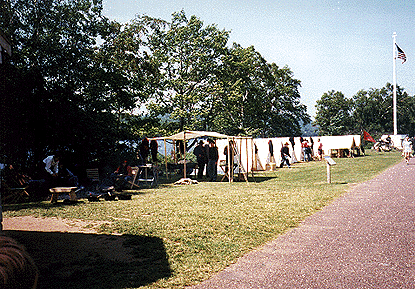 |
Fearing civil disorder in the newly opened copper district, two companies of U.S. infantry were sent to Copper Harbor to build Fort wilkins. The troops were to serve as a buffer between prospectors and Indians, to maintain law and order, and to enforce the federal authority in land claims. It was the northernmost post in a chain of forts that stretched from Keweenaw Point to the Gulf of Mexico. |
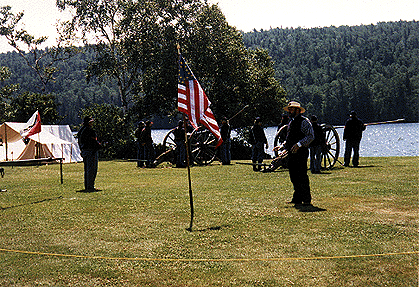 |
However, it had little military importance and fears of local unrest proved unfounded. As the threat of war with Mexico loomed in 1845, the fort's garrison was reduced by half, and the following year the post closed. |
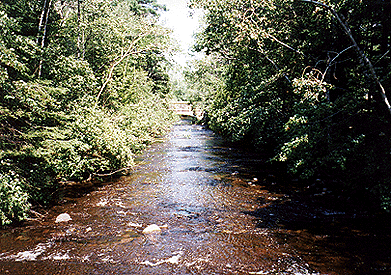 |
Immediately, the government began leasing the property for a wide variety of purposes. One of the early renters of the property was Dr. Livermore, who established a health resort. he claimed the "pure waters" of Lake Fanny Hooe, which borders the southern end of the fort, had healing powers. The fort also served as a hunting camp and summer camping resort. |
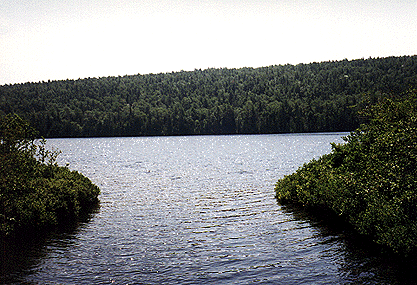 |
As was common at frontier outposts, local geographic features, most notably Lake Fanny Hooe and other inland lakes, were named in honor of officers' dependents. Women and children comprised nearly half of the fort's small population in 1870. |
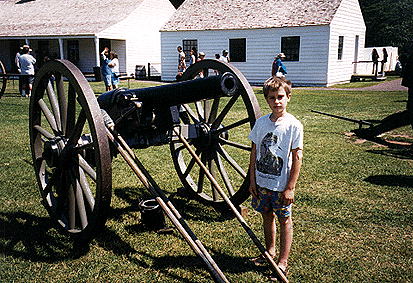 |
The U.S. Army reoccupied Fort Wilkins again in 1867 due to lack of barrack space elsewhere. However, troop strength was allowed to decline and the expense of maintaining Fort Wilkins led to its abandonment in 1870. Once again it was leased out for various functions, and unfortunately it began to deteriorate. |
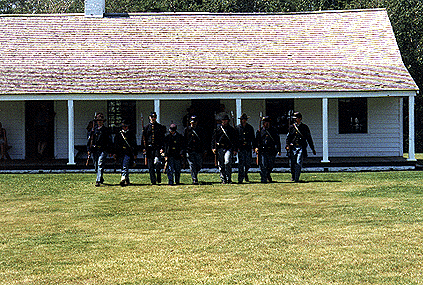 |
In 1921 the property was designated a state historic landmark. Two years later it became a Michigan state park. Site preservation, begun in the 1920's and 30's, continues, based on research by historians, archaeologists and architects. |
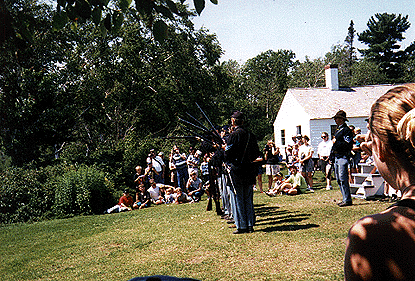 |
In 1976, the park initiated the costumed role players. Museum exhibits and audio-visual programs also help bridge the gap between the past and present. |

Yooper Ring |
 |

 |
 |
 |

It takes all day
To fill my eyes
With sunny grass
And butterflies.
For spot from chuckles :"


 |
 |
 |
